These are the steps that must be taken if you want to rank at the top of the map results:
1. Designate Your Keywords
The first step you should take is to create a list of keywords that accurately describe your services. If you are a used car dealer, for instance, you may select “pre-owned cars,” “certified cars,” and “secondhand cars.” After your list is almost full, register for a Google AdWords account at no cost.
There’s no need to design or finance an advertising campaign. Having an AdWords account is required in order to use the Google Keyword Planner for free. This tool provides relevant keyword suggestions and allows you to enter your preferred keywords to see how much traffic they generate.
You can now refine your keyword list. Two broad categories can be applied to all keywords:
Purchasing Intent: Keywords indicating a prospect’s impending purchase decision are known as buying intent keywords. For instance, a person looking for a local Honda dealership in Atlanta is probably aware that she wants to purchase a Honda. The keywords that convert the quickest are those with purchase intent, so concentrate mostly on those. Feature them prominently on your home page and create service pages specifically for them.
Research purpose: Prospects that are “just looking around” utilize terms with research purpose. They are in the early stages of the sales funnel, although they may purchase an automobile in the future. For instance, a person looking for “what is a hybrid?” might be considering buying a hybrid for her next vehicle and unsure if it would be a wise decision. Since research intent keywords don’t provide quick conversions, you should give them less importance in your campaign. However, keep them around, as they are quite helpful for FAQs and blog entries. Through these posts, potential customers learn more about your business and may remember you for their future car purchases.
2. Optimize Your Keywords:
Optimizing keywords involves utilizing the finalized keyword list on both your website and Google My Business page. The Google My Business page acts like a mini-website appearing in Google’s “Map” section for local businesses, offering a brief dealership overview and potentially enhancing Google rankings quickly. It’s crucial to complete and accurately fill out your Google My Business page. Initial steps include claiming and verifying your page on Google. Ensure consistency in listing your business name, address, and local phone number across all platforms. Google necessitates service highlighting through category listings, with a recommendation of listing 3 to 5 categories. A succinct description of your dealership, coupled with a call to action and adhering to a 100 to 200-word limit, is required. It’s also crucial to maintain updated and consistent operation hours across all platforms. Additionally, incorporating clear, well-sized images of your dealership can significantly improve customer engagement.
3. Website Optimization:
Website optimization involves initially focusing on your “core” pages, like the homepage and service pages, and optimizing them for buying intent keywords. Subsequently, “content” pages like FAQs and blogs should be optimized for research intent keywords. For the homepage, crucial elements include a well-crafted title tag resembling a chapter title of a book, a meta description of around 100 to 150 characters detailing core services and ending with a call to action, and a visible headline (H1) that is concise, descriptive, and contains your primary category. The page copy should be a well-written and edited overview ranging from 500 to 1000 words, encompassing background information, a description of core services, and ending with a strong call to action. For service pages, each primary service should have its own page, optimized similarly to the homepage, and targeted at a relevant keyword.
4. Collect Citations and Links:
With the foundational structure of your local SEO campaign set, it’s time to gather citations and links to extend your reach and enhance your Google rankings. Citations refer to the online listing of your business’s name, address, and phone number (NAP) on directories, which can be general national directories like Facebook, local directories like your Chamber of Commerce website, or industry-specific directories for car dealerships. While many directories offer free citations, some charge a fee; it’s advisable to check Google Analytics to assess the traffic and conversions from those sites before paying. However, inbound links from respectable, high-caliber websites are necessary for high Google ranks. Building both online and in-person relationships with businesses offering complementary services, like auto repair shops, can be beneficial. You can exchange web links with them. Tools like Moz Open Site Explorer can help identify where your competitors are obtaining their links.
5. Request Reviews:
Online reviews accomplish two main goals: they persuade potential customers to visit your dealership and they verify your company’s legitimacy with Google. Even though all review sites are beneficial, Google My Business reviews will have the fastest impact on your Google results. Directly request a review from your pleased clients in an email, along with a link to your Google My Business profile. Regularly performing this will quickly result in a steady flow of reviews.
6. Track Your Results:
To gauge the success of your local SEO campaign and identify areas for improvement, it’s essential to track your results. Focus on these three main metrics:
- Rankings: Utilize tools like the free Google Search Console to check how your pages rank on Google, or opt for paid tools like RankRanger.com for more detailed analysis. Monitor your rankings monthly.
- Traffic: Use Google Analytics to monitor the number of visitors to your website, identify the most visited pages, and understand the percentage of traffic coming from Google search. Review this data monthly to spot long-term trends.
- Conversions: Track actions you desire visitors to perform on your website, like contacting you for a discount on a new vehicle, using Google Analytics. This tool helps in analyzing both phone and web conversions and understanding the conversion rates of your pages.









